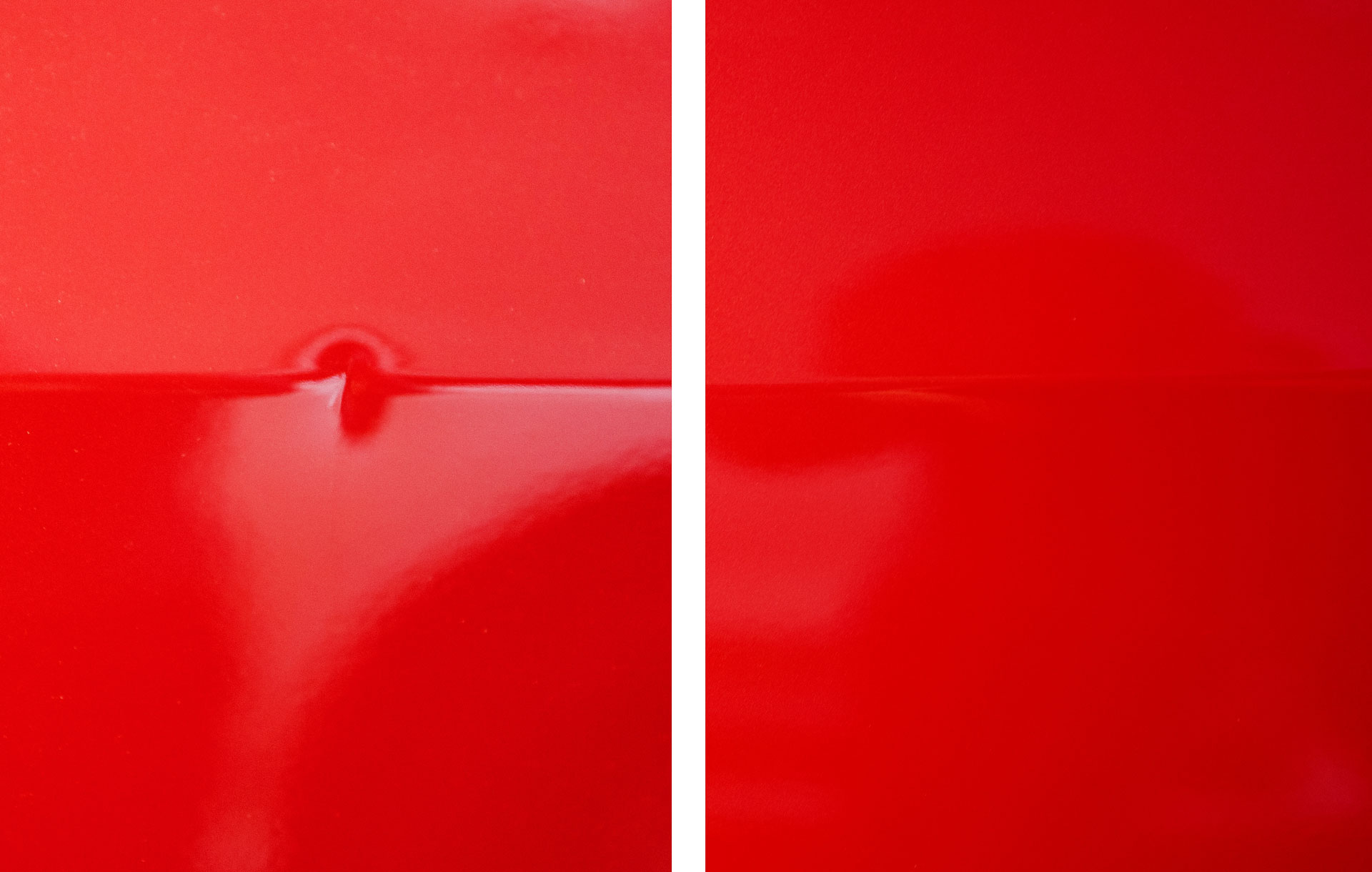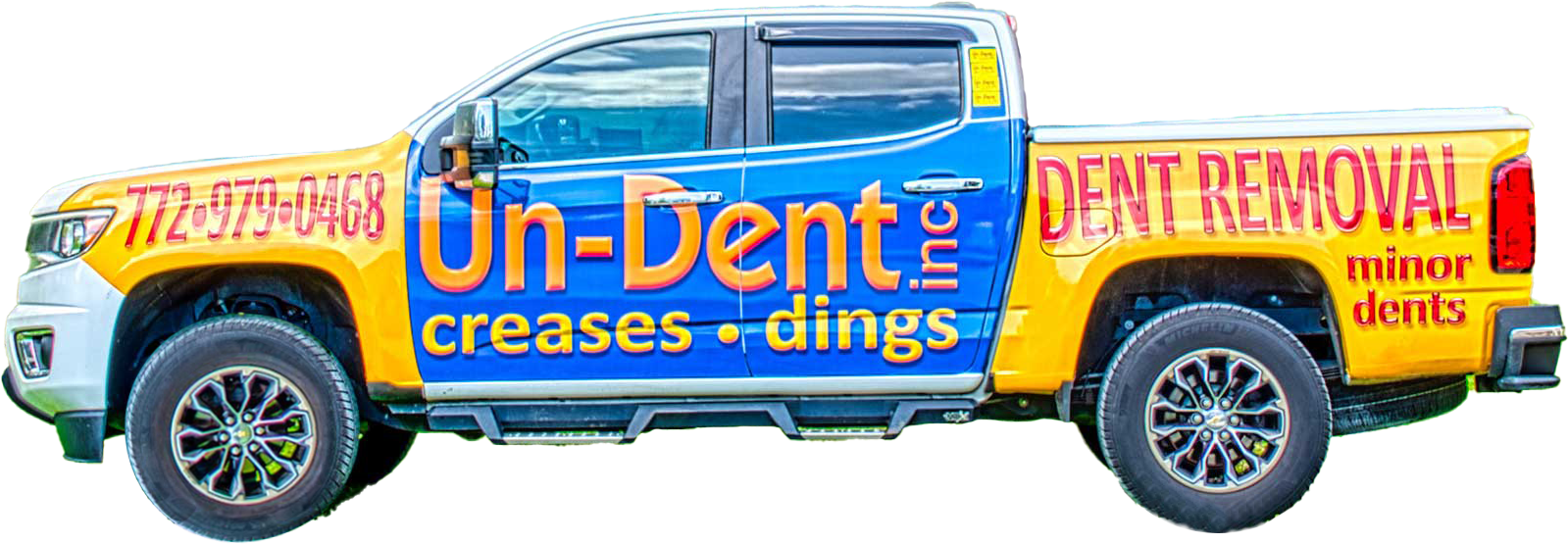Your vehicle is your pride and joy, and it’s frustrating when it gets dented or damaged. Whether it’s a minor annoyance like a door ding or a more significant issue like hail damage, understanding the types of dents your vehicle can sustain is crucial. Fortunately, there’s a solution that can restore your vehicle’s appearance without the need for costly and time-consuming traditional auto body repairs: Paintless Dent Removal (PDR). In this comprehensive guide, we will help you identify common types of vehicle dents and explain how PDR can address each, saving you time and money while preserving your vehicle’s original finish.
Types of Common Vehicle Dents
Door Dings
Door dings are among the most common types of dents, often caused by careless parking lot encounters. They usually appear as small, shallow depressions in the outer panel of the car door. While door dings may seem minor, they can be quite noticeable, especially on vehicles with glossy finishes.
Solution: PDR is highly effective for door ding repair. Technicians use specialized tools to access the backside of the dent and gently massage the metal back to its original shape, without the need for repainting.
Creases
Creases are more defined and elongated dents that typically occur when a sharp object impacts the vehicle’s surface. These can be tricky to repair, as they often follow body lines or contours.
Solution: Paintless dent removal can still address creases, but it may require more time and skill. Technicians use a combination of techniques to carefully work out the crease, ensuring that the vehicle’s original shape is restored.
Hail Damage
Hailstorms can wreak havoc on a vehicle’s exterior, leaving behind a multitude of small, round dents. These dents are usually evenly distributed across the car’s surface.
Solution: PDR is particularly well-suited for hail damage repair. Technicians assess the extent of the damage and use specialized tools to gradually push the dents out, leaving no trace of the storm’s fury.
Dimpled Dents
Dimpled dents are shallow depressions with a small, defined center point. They are often caused by small, high-velocity objects, such as gravel or small rocks.
Solution: PDR is highly effective for dimpled dent repair. Technicians use precision tools to carefully push the center of the dent back into place, gradually smoothing out the surrounding area.
Sharp Impact Dents
Sharp impact dents result from a more significant collision, often involving a pointed object or a heavy impact. These dents tend to be deeper and have a more pronounced edge.
Solution: While paintless dent removal can address some sharp impact dents, more severe cases may require traditional auto body repair. Technicians will assess the damage and recommend the most appropriate solution.
Large and Complex Dents
Large or complex dents can vary widely in shape and size, making them challenging to repair. They can result from accidents, collisions, or impacts with large objects.
Solution: While some large and complex dents can be repaired using PDR, others may require traditional repair methods. A skilled PDR technician will evaluate the damage and advise on the best course of action.
How Paintless Dent Removal Works
Now that we’ve identified common types of vehicle dents let’s explore how Paintless Dent Removal works and why it’s an excellent choice for many dent repair needs.
Paintless Dent Removal is a specialized technique that allows technicians to repair dents without the need for paint or body filler. Here’s how it works:
- Assessment: The first step in PDR is to assess the damage. Technicians carefully examine the dent’s size, depth, and location to determine if it’s a good candidate for PDR.
- Access: To access the dent’s backside, technicians may need to remove interior panels, lights, or trim pieces. This allows them to reach the dent from behind.
- Specialized Tools: PDR technicians use a variety of specialized tools, including rods and dent removal hammers, to gently massage the damaged area from the inside, gradually pushing the metal back to its original shape.
- Precision and Skill: PDR requires a high level of precision and skill. Technicians use their expertise to ensure that the dent is fully repaired while preserving the vehicle’s original finish.
- No Painting Needed: One of the significant advantages of PDR is that it doesn’t require repainting. Traditional auto body repairs involve sanding, filling, and painting, which can be time-consuming and expensive. PDR eliminates these steps, saving you both time and money.
- Environmentally Friendly: PDR is an environmentally friendly option because it reduces the need for paint and body filler, which can release harmful chemicals into the environment.
Why Choose Paintless Dent Removal?
Now that you understand how PDR works let’s explore why it’s an excellent choice for dent repair:
- Cost-Effective: PDR is often more cost effective than traditional auto body repairs. Since it doesn’t require repainting, labor and material costs are significantly reduced.
- Preserves Vehicle Value: Maintaining your vehicle’s original paint finish is crucial for preserving its resale value. PDR helps maintain your vehicle’s appearance and value.
- Quick Turnaround: PDR typically has a much faster turnaround time than traditional auto body repairs. You can get your vehicle back on the road sooner.
- Quality Results: When performed by a skilled technician, PDR can deliver high-quality results. Your vehicle will look as good as new.
- Environmentally Friendly: Choosing PDR over traditional repair methods contributes to environmental sustainability by reducing the use of paint and chemicals.
Finding a Reliable PDR Service
To ensure a successful PDR experience, it’s essential to find a reliable and skilled PDR service provider. Here are some tips to help you make the right choice:
- Experience: Look for a PDR company with a proven track record and years of experience in the field.
- Certifications: Ask if the technicians are certified in PDR techniques. Certification demonstrates their commitment to professionalism and quality.
- References and Reviews: Read online reviews and ask for references from past customers to gauge the company’s reputation.
- Insurance Coverage: Check if the PDR service is approved by your insurance company, as this can make the claims process smoother.
- Quality Guarantee: Inquire about any warranties or guarantees on the PDR work to ensure your satisfaction.
Conclusion
Identifying common types of vehicle dents and understanding how Paintless Dent Removal works can save you time and money when it comes to dent repairs. Whether it’s a door ding, hail damage, or another type of dent, PDR offers a cost-effective, environmentally friendly, and high-quality solution. By choosing a reputable PDR service provider, you can restore your vehicle’s appearance and preserve its value without the hassle of traditional auto body repairs. So, the next time your vehicle encounters an unsightly dent, remember that PDR is a reliable and efficient way to make it look as good as new.


